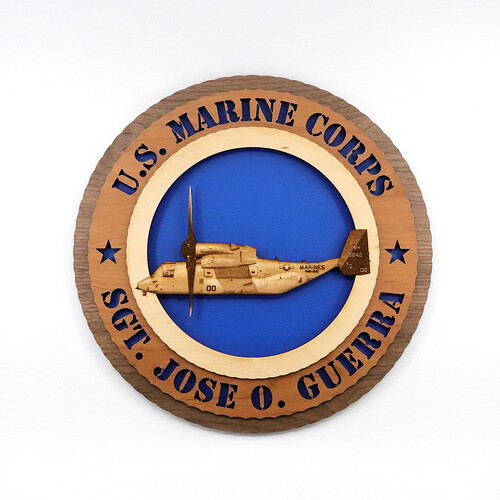you can just upload png or other image types as is. Its way slower and you will run into size limitations depending on your settings. You will always lose detail with image trace so i try not to use it unless i really want to use an svg
From illustrator, just save it as a .SVG and upload that directly into the Glowforge UI. Much better results.
The glowforge will convert the image to a bitmap ether way so from what I’ve seen as long as the original image is good you will be fine. Helps to scale it to fit inside the 12x20 beforehand so you aren’t dealing with an unnecessarily large image
Your technique has helped my efforts greatly. Working large in Photoshop and scaling it down in Inkscape made a huge difference. Saving as SVG worked fine.
Thanks for sharing your work! 
When you scale it in Illustrator, you are maintaining the resolution. If you scale it down and end up with a 600 pixel per inch resolution that you embed in the SVG, that’s what goes into the Glowforge.
When you upload just a jpg of whatever, I’m not sure what happens. It won’t respect the PPI. For example, if you set it up in Photoshop to be 8x10 and 300PPI, it will render in the UI as a huge image (96PPI). I’ve never tested the results of rescaling in the UI (whether it just scales or actually resamples).
Thanks for the insight!
I don’t know which it’s doing but I tried it and the image detail seemed to stay the same. I did an initial etch, then made it very small, then way bigger and at least what I could see it didn’t loose any details. Not the optimal way of working because it’s way less precious but it seemed to work fine.
Nice! Yeah, the halftone is a great idea
I haven’t engraved on veneer before, but I posted some procedures for photoshop and illustrator the other day to get a decent photo engrave on PG maple plywood. This veneer engrave looks amazing by the way!
Beautiful
